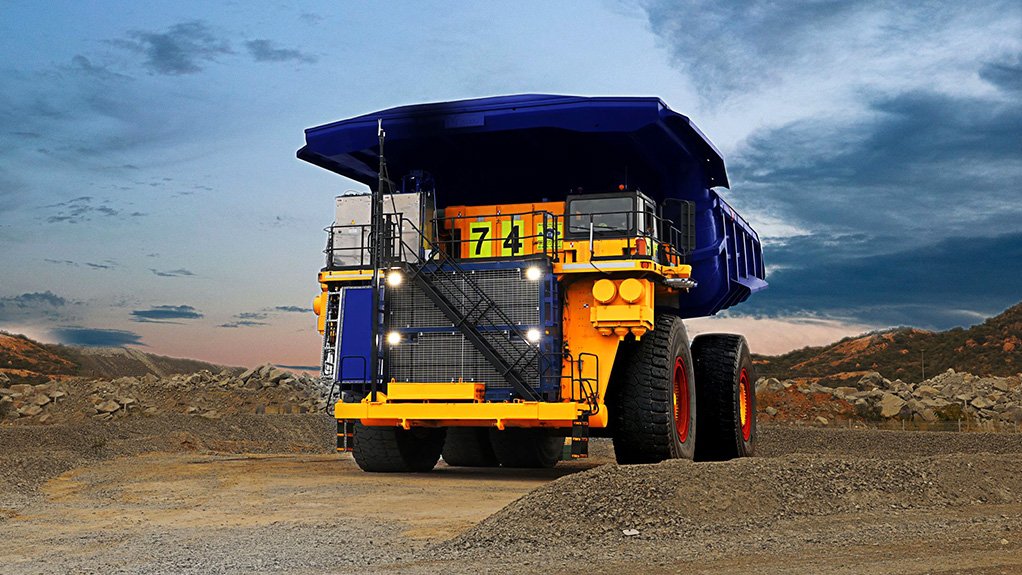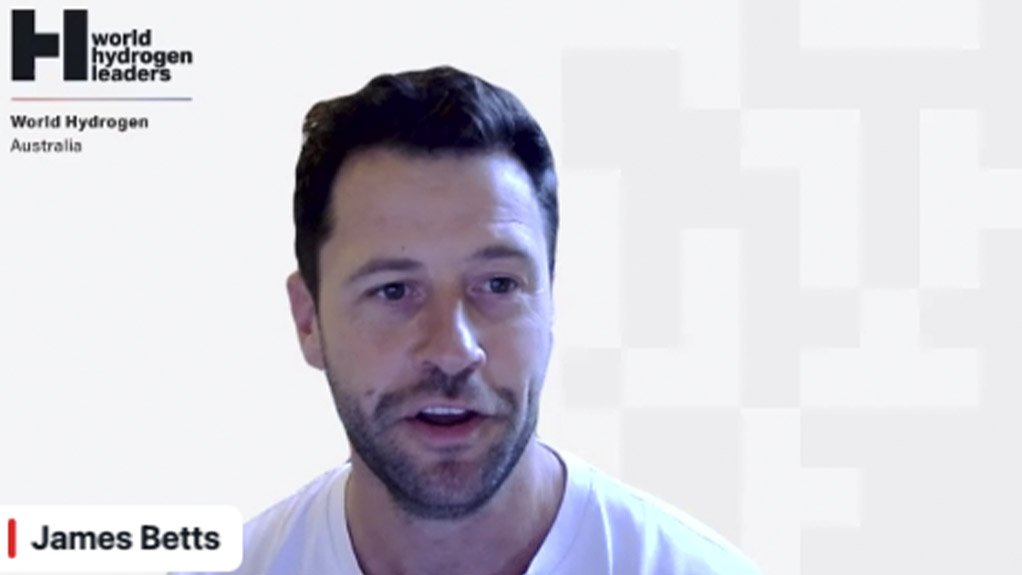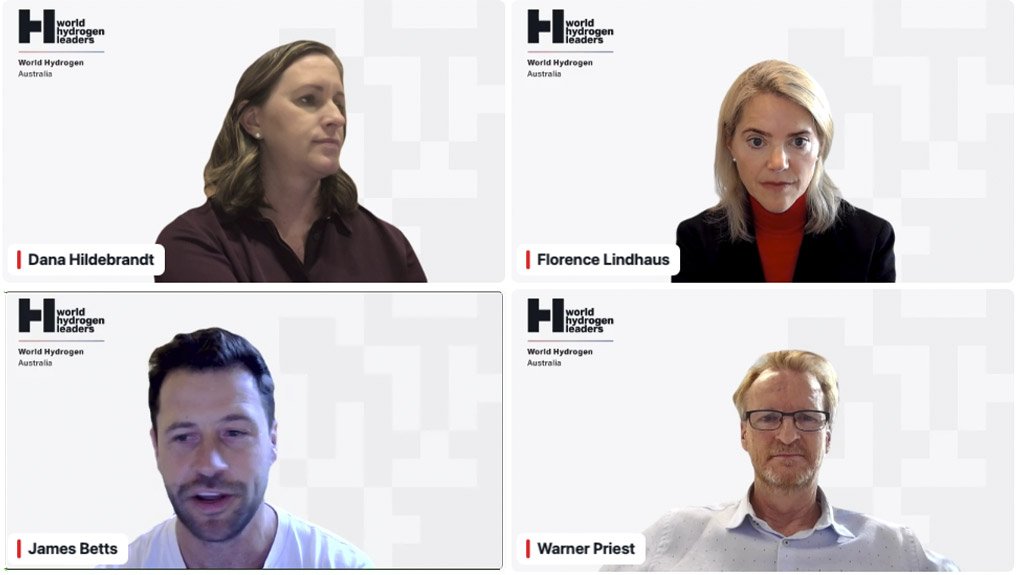JOHANNESBURG (miningweekly.com) – One hydrogen haul truck eliminates the deleterious carbon emissions of the equivalent of 700 cars, First Mode global hydrogen sourcing director James Betts highlighted during this week’s World Hydrogen Australia webinar, where he spoke of the need for the hydrogen haul trucks to be conceived as bringing about a holistic decarbonisation of many aspects of mine sites rather than being viewed in isolation.
“Just to give you a bit of context, these mine sites have many haul trucks running through them, so there's a huge amount of potential diesel saving.
“A really beautiful thing about hydrogen, and this is why I'm so very passionate about it, is that it comes with a system. There are the haul trucks, the trains, and there's ammonium nitrate, which is used in explosives in mining, the base of that being hydrogen.
“There’s a whole ecosystem around that, and so rather than thinking about each of these individual use cases, one of the things we really need to start taking seriously is hydrogen in the system.
“Hydrogen on a standalone use case basis is where we're struggling commercially to make it feasible, but if you can bring that broader picture into play, it's a very, very smart and tidy solution, especially within the context of hubs and initiatives and the hub-and-spoke concept for multiple use cases.
“I think mining is absolutely key for the introduction of hydrogen and hence we'll be focusing our attention on trying to drive a bunch of innovations in that space to make it happen,” said Betts, whose First Mode is focused on decarbonising heavy industry, primarily in mining.
With Betts on the panel were Australia’s Queensland Department of Energy and Climate Hydrogen Hubs and Initiatives director Dana Hildebrandt, InterContinental Energy midstream director Warner Priest, and German-Australian Chamber of Industry hydrogen head Florence Lindhaus.
The panelists collectively presented a compelling case for the introduction of green hydrogen solutions into mining and mining-linked activities as part of an imperative requirement to combat climate change that is already threatening economies globally.
Readers of Mining Weekly will recall that the prototype zero-emission hydrogen-powered mine haulage truck Betts was citing was unveiled by South African President Cyril Ramaphosa at the Mogalakwena platinum group metals (PGMs) mine in South Africa’s Limpopo two years ago. This mine is owned by Johannesburg Stock Exchange-listed Anglo American Platinum, which may soon also be listed on the London Stock Exchange as part of a major value-adding initiative being implemented by Anglo American.
Capable of carrying a 290 t payload, the nuGen Zero Emissions Haulage Solution (ZEHS) hydrogen truck generates more power than its diesel predecessor.
The pioneering creation of the nuGen ZEHS involved a 2700 hp diesel engine being innovatively replaced by eight parallel PGM-catalysed hydrogen fuel cells, totalling 837 kW, and a 1.2 MWh lithium-ion battery.
This world-first was described at the time as a crucial step in the Anglo American group’s pathway to carbon-neutral operations by 2040.
The task of First Mode, which has a combined business with Anglo American, is to accelerate the implementation of the nuGen ZEHS.
The new combined business retains the First Mode name as an independent business and prioritises developing the nuGen ZEHS, while building on several years of extensive joint development.
“In 2021, we had the first ultra class haul truck running on hydrogen power, so we’re very, very familiar with hydrogen and what that means, not only from the use case side, but also the supply side, and that's really important,” Betts emphasised at the webinar covered by Mining Weekly.
GREEN HOT BRIQUETTED IRON
Using green hydrogen to turn iron-ore into hot briquetted iron (HBI) was comprehensively spelt out during the World Hydrogen Australia webinar by Priest, who highlighted a twofold opportunity.
Firstly, the world has to decarbonise iron-ore in view of iron-ore emissions accounting for 8% to 9% of total emissions globally, and, secondly, green HBI offers an enticing local value-add country-growth factor.
Interestingly, in South Africa, where last year’s iron-ore production totalled 61-million tonnes, it is envisaged that local pre-export green HBI value-add will take place at the ready-made Port of Saldanha, in the Western Cape.
Priest pointed out that Australia exports about 38% of the world's iron-ore resources out of the Pilbara.
Approximately 800-million tons of iron-ore is exported and that iron-ore mostly goes to China and what China does is process that iron-ore through the direct reduction of iron (DRI) method using coking method, "which is essentially coal", said Priest.
In this context, it is important to point out that South Africa has decades of DRI experience, much of it having been pioneered in the 1970s by the then Anglo American-owned and still-operating Scaw Metals in Germiston, 16 km east of Johannesburg.
Outlining the DRI route, Priest said: “What you do is you burn the coal with the iron-ore, and the carbon molecule in the coal attaches itself to the oxygen and the iron oxide is processed into iron, and carbon dioxide is emitted.
“The other way of processing the iron is to introduce hydrogen into the direct reduction of iron process and for that hydrogen molecule to attach to the oxygen molecule in the iron-ore, and emit water vapour," Priest explained.
Again making reference to a twofold opportunity, Priest said: "One is that we don't find a situation where our iron-ore assets become stranded because the world is going to move to green iron; but there's [also] a value add opportunity in building these DRI plants that use green hydrogen to do that first process level of taking the iron-ore and turning it into HBI, which can then be exported to countries and those countries can then produce the green steel from the HBI.
“To give you an idea, 800-million tonnes, in the long run, would require about 15 to 20 of our Australian renewable energy, hydrogen projects at 26 GW each, to process.
“To be able to turn the ore into green HBI would need 15 to 20 of our projects in the Pilbara. We've got one that's under development at 26 GW.
“We would need 15 to 20 of those just in the Pilbara to export all our 800-million tonnes of iron-ore as a green HBI to the global market. That's the Pilbara. There are also enormous resources of iron-ore in South Australia.
“Then there's the shipping sector, which would require another 20 of those 26 GW projects. This is going to be an enormous market and the opportunity for Australia is enormous.
“We've got phenomenal wind and solar resources, we've got the space, we can value-add on our natural resources, which create lots of jobs and growth, so whilst there is a big domestic play, it is also ultimately an export play at the same time,” Priest pointed out.
GREEN AMMONIA
Linked to green hydrogen is also green ammonia, which also received considerable attention at the World Hydrogen Australia webinar.
Interestingly, South Africa is advancing a R105-billion green ammonia project in the Eastern Cape, and just as is the case with the Saldanha port being readily available for green iron exportation, the green ammonia project being led in South Africa by Hive Hydrogen South Africa chairperson Thulani Gcabashe will also be making use of a ready-made port, this time the Port of Coega.
Hive Hydrogen South Africa is co-founded by BuiltAfrica, which Gcabashe launched in 2009 as an investment and development business focused on sectors that support sustainable development, and Hive Energy, which Giles Redpath of the UK launched in 2010 to participate in the solar PV expansion across England.
Gcabashe is a former CEO of South Africa’s electricity utility Eskom and a former chairperson of Standard Bank.
Very fortunate for South Africa is that this pioneering green hydrogen/green ammonia project Gcabashe is helping to progress is already at an exceedingly advanced stage of conceptualisation and planning.
The project, for which clean, green renewable energy is on the way, also presents an opportunity to create a key initial hydrogen valley-type kickstart in a South Africa that is well endowed with superior sun, prime wind, sufficient land, readily available port infrastructure and the minerals and PGMs needed to be a globally competitive green fuel producer.
The envisaged one-million tons of green ammonia a year at Coega will provide green molecules to assist with the decarbonisation of heavy industries and transportation industries.
Every effort is being made to work with all spheres of government, development funding institutions, and local businesses to ensure that the full potential of the project’s impact on the development of the Gqeberha area is realised, at a time when Hive Hydrogen is also collaborating with Itochu Corporation of Japan to develop a least-cost green ammonia solution.
Itochu is a potential strategic equity investor and offtaker from the gigascale green hydrogen project and the Presidential Investment Summit project was awarded strategic integrated project status by the Ministry of Public Works in November 2022.
EMAIL THIS ARTICLE SAVE THIS ARTICLE ARTICLE ENQUIRY
To subscribe email subscriptions@creamermedia.co.za or click here
To advertise email advertising@creamermedia.co.za or click here















